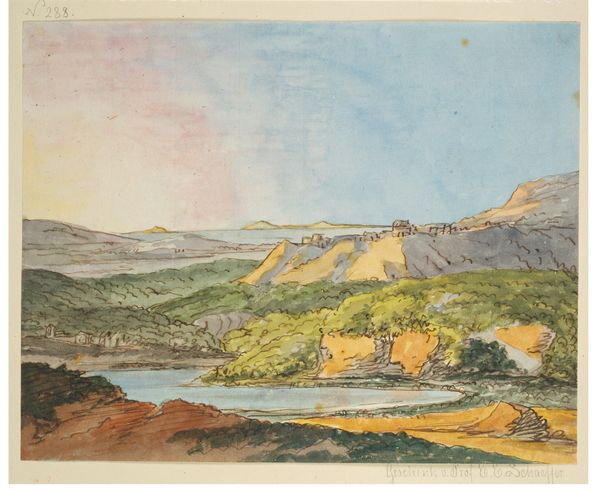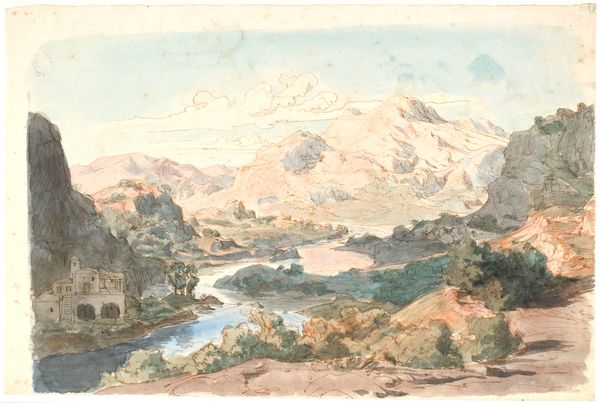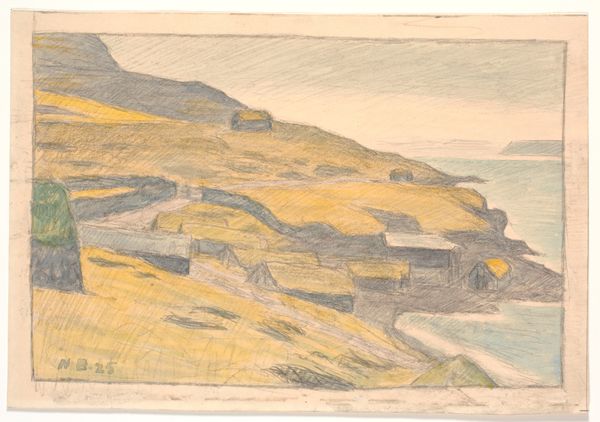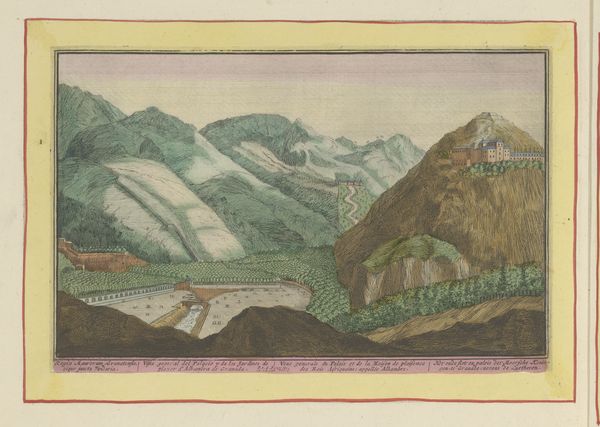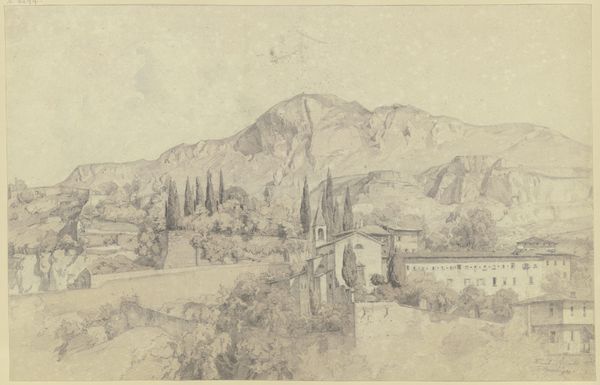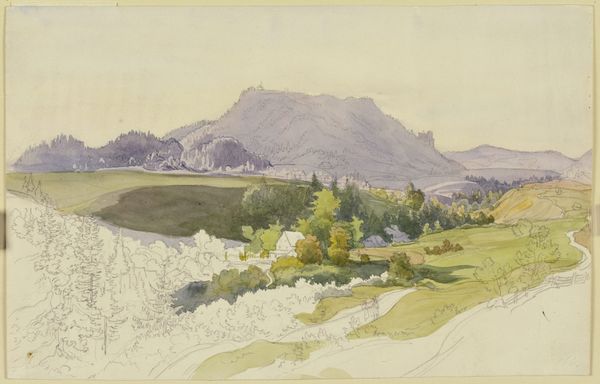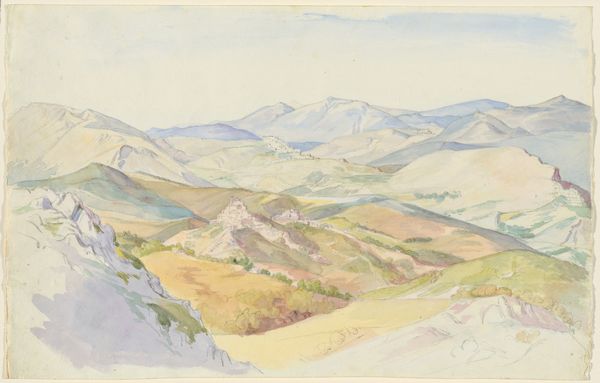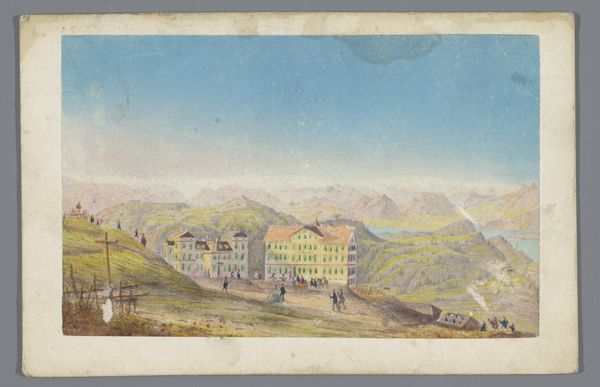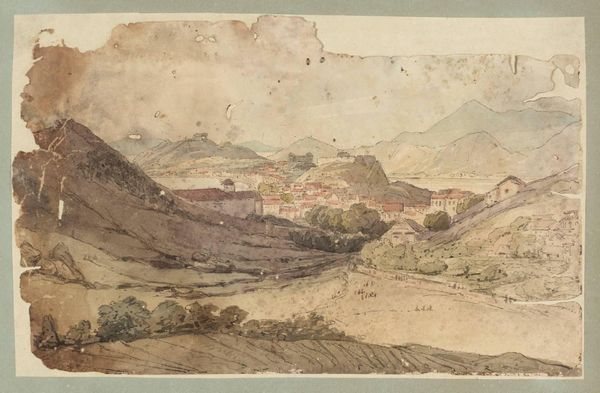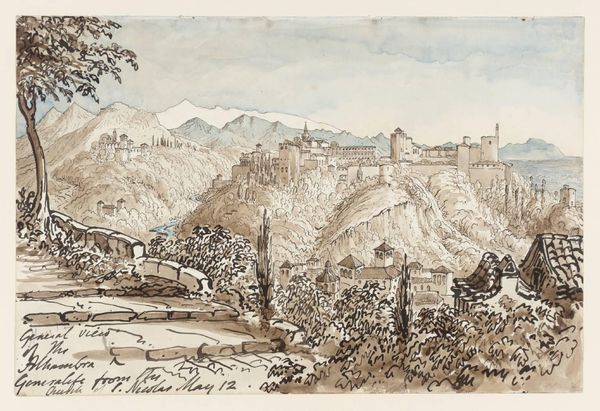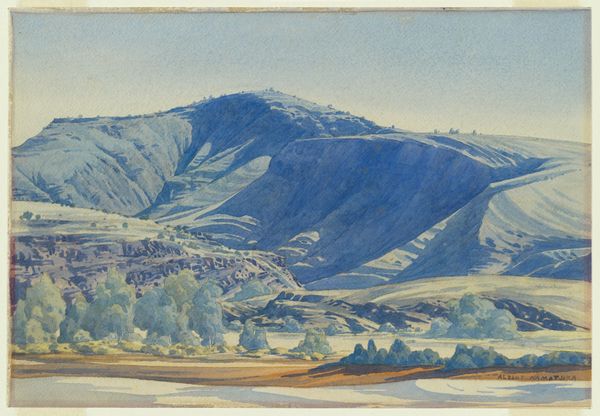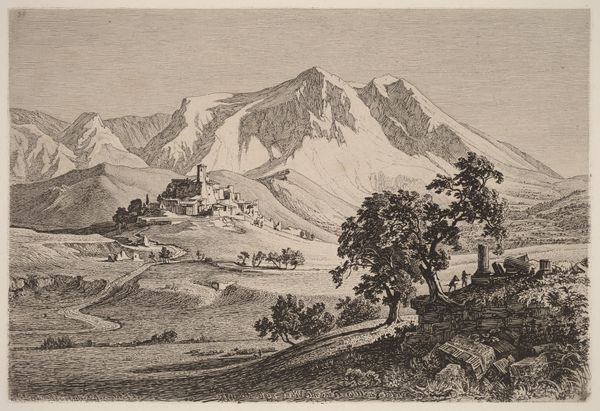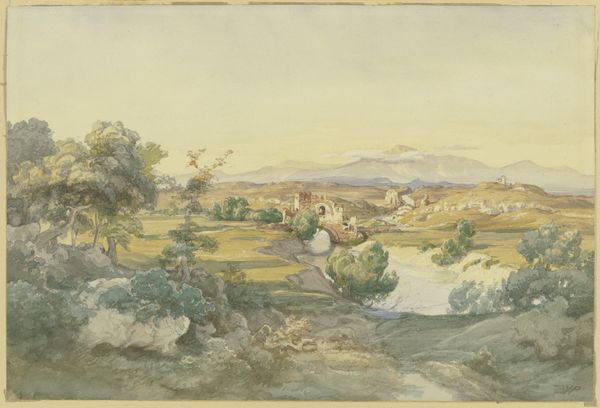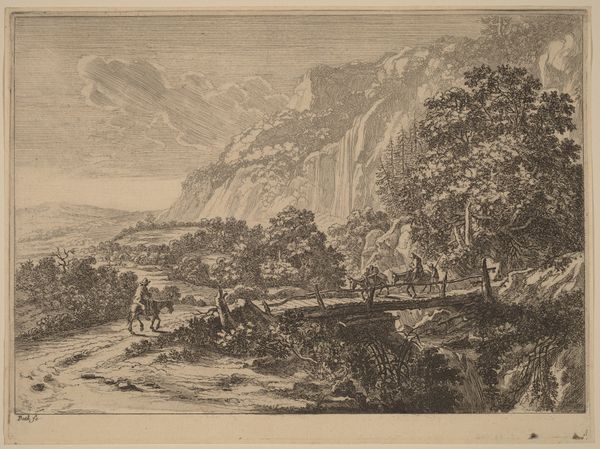
Copyright: Public domain
Curator: Ivan Bilibin, a name synonymous with early 20th-century Russian illustration and stage design, created this watercolor painting entitled "Crimea. Koktebel" in 1939. Editor: Right off, it feels...serene, doesn't it? Like a Sunday afternoon nap in the countryside. The mountains loom, but not in a threatening way. They feel like sleepy giants watching over the valley. Curator: Indeed. Though made on the eve of World War II, we see none of the social or political anxieties brewing during this period. What stands out, for me, is the rendering of Koktebel in Crimea, not merely as a scenic landscape, but also subtly as a site where Russian identity could be imagined and fostered, somewhat removed from the complexities of life under Stalin. Editor: Identity, huh? I see it. It’s like… the place itself becomes a character. Bilibin isn’t just painting scenery; he’s creating a mood, a feeling of rootedness. And the simple house in the foreground – it whispers "home". Maybe a longing for one, too? Curator: That yearning is a possibility, though a reading against the grain could consider that the depopulation of Crimean Tatars in this location might create a particular sense of dislocation and forced rootedness. What, I wonder, did 'home' signify to Bilibin given this setting, both as an aesthetic and socio-political concept? Editor: Whoa, heavy. Makes you see that quaint little farmhouse in a whole new light, doesn’t it? Now, I’m thinking less Grandma’s cozy cottage, and more...questions. I am interested in the perspective of the fence line and well-worn path through the sun-drenched fields. It’s simple, even…naive. Curator: Bilibin had already distanced himself artistically from revolutionary avant-garde movements. Consider how this work engages in academic art traditions – clear perspective, identifiable subject matter – all within a framework where art serves to represent a tangible reality but may also carry latent or explicit cultural and ideological weight. Editor: It’s so fascinating how a seemingly peaceful scene can hold all that complexity. It really proves how looking closely – and talking it out – can change everything. Now it just makes me think, who are the giants watching over the valley now? Curator: An essential question that takes Bilibin’s artistry, history, and the urgent matters of the present into account.
Comments
No comments
Be the first to comment and join the conversation on the ultimate creative platform.
